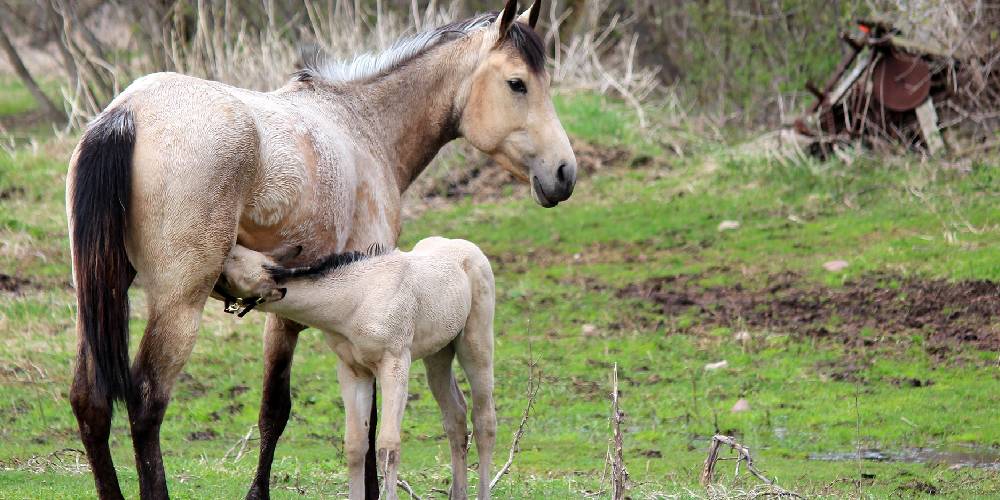Buckskin horses are by far one of the most desired coat colors, mainly in the western world. Buckskins are popular for their unique coat color and flashy looks. There are many things to learn about buckskin horses, but do you know these five facts on this color?
1. Buckskins are Genetically Bay Horses

Did you know that buckskin horses are actually just bay horses whose color has been diluted? Buckskin horses are in fact bay horses when looking at their genetics, but this dilution gene is what gives them their pale golden coat color.
The cream gene that these horses carry is the same cream gene that causes Palominos, Cremellos, Perlinos, Smokey Blacks, and Smokey Creams to be the colors that they are.
Buckskins still carry the dark mane, tail, skin, ear tips, and legs of a bay horse, but their overall color is lighter thanks to the cream gene.
2. Buckskins got Their Name Because Their Coat Color Resembles The Color of Deer Skin
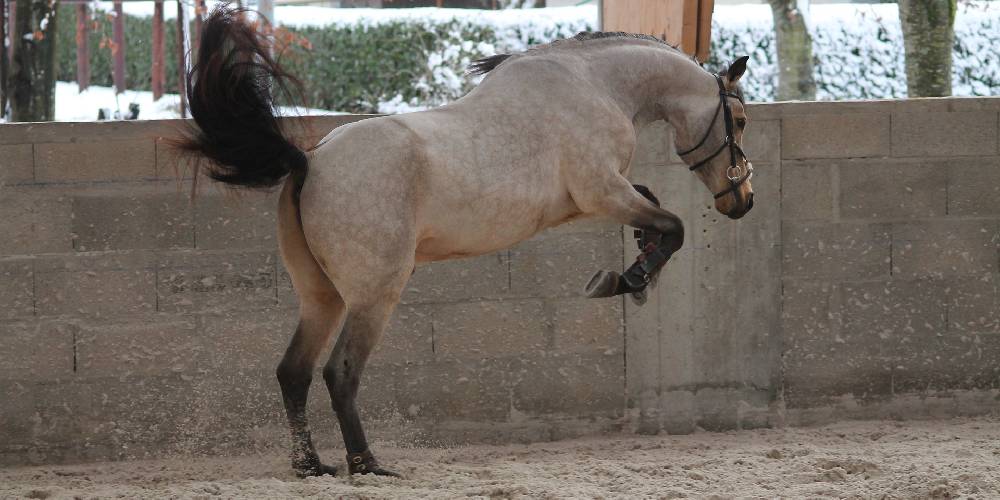
Have you ever wondered where the name buckskin came from? Just look at the name closely. A buck is a male deer and we all know what skin is. Deer skin (essentially what the name buckskin means) is a pale golden tan color in most cases. This is where the buckskin got its name.
Because of the color resemblance between deer and these lovely golden horses, buckskin is a name that just seemed to stick.
3. Most Buckskins have Light Amber Colored Eyes
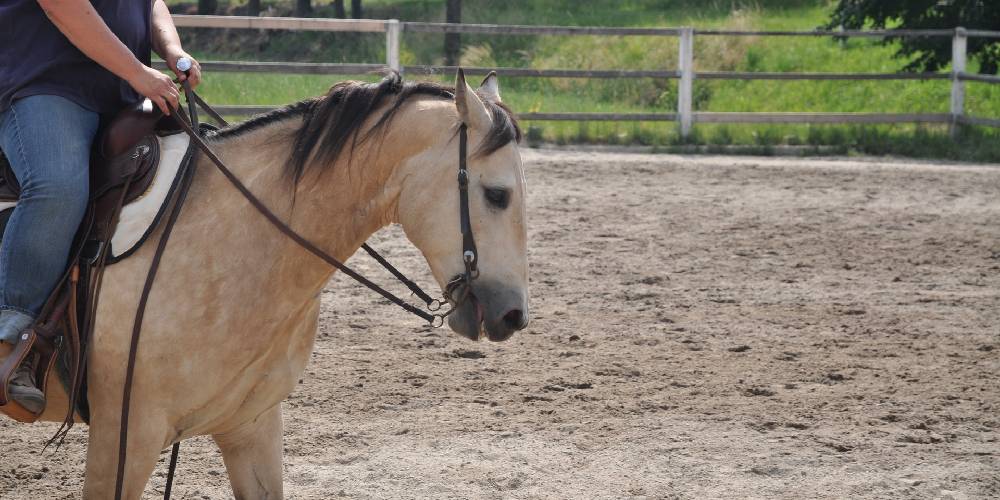
Not only does the diluting cream gene affect the color of the horse’s coat, it also can affect the color of the horse’s eyes.
Most horses have brown eyes, but because buckskins have a gene that dilutes their color, their eyes are often seen as more of an amber color rather than the dark brown or black that many other horses have.
The pale eye color is fairly common in horses who carry this cream gene meaning in other diluted coat colors, amber eyes are a common sight.
4. Buckskin Horses have Stronger Hooves than Other Colored Horses
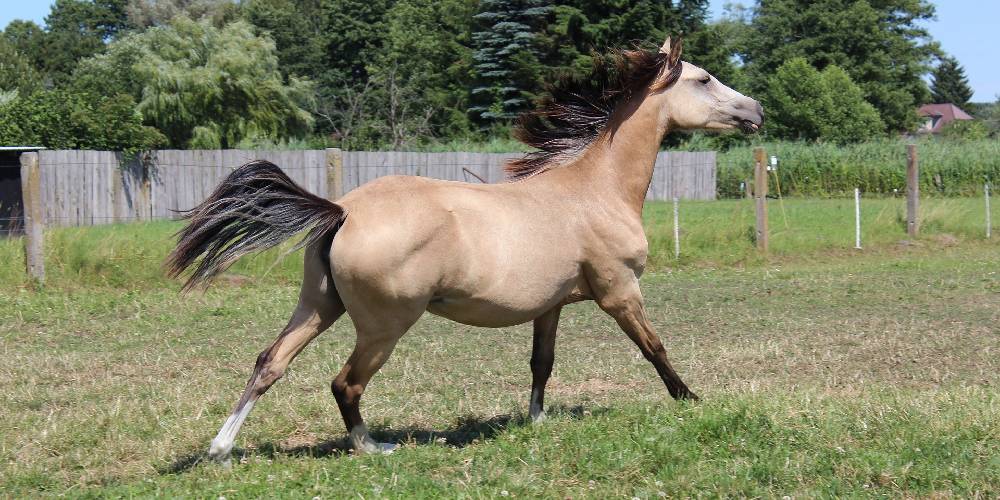
Though the reason mainly lies in the genetics of these horses, buckskins are known to have really strong feet, or hooves of steel if you will.
Because these horses are mainly seen as working horses, over time these animals have adapted to have harder stronger feet than most other horses.
5. True Buckskin Horses Shouldn’t Have A Dorsal Stripe
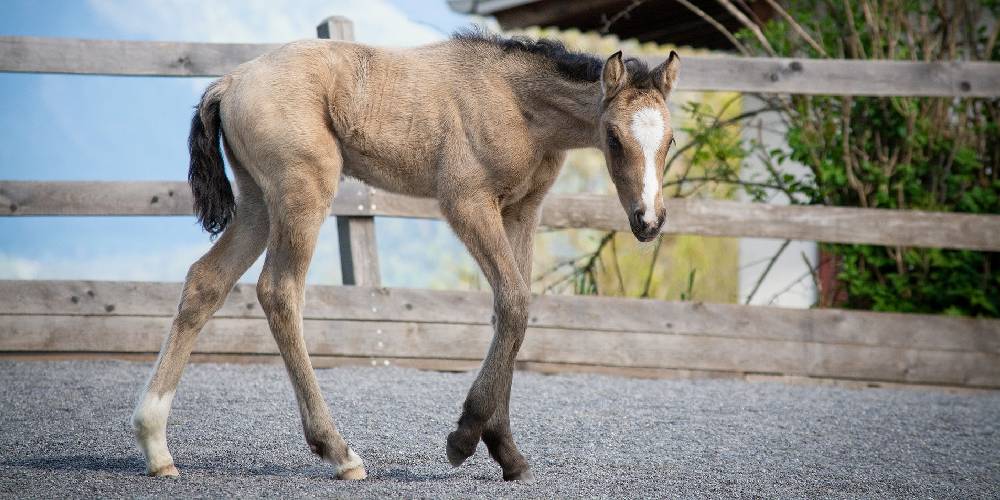
Though you may see horses who carry the same black mane and tail, dark skin, dark ear tips, and dark legs, if that horse has a dorsal stripe or other striping on its legs, it is likely not a buckskin at all and it is likely a dun horse instead.
Buckskins and duns are often confused as they look so similar in color. To tell them apart, look for any striping on the horse’s coat to indicate that they are either a dun or a buckskin.

